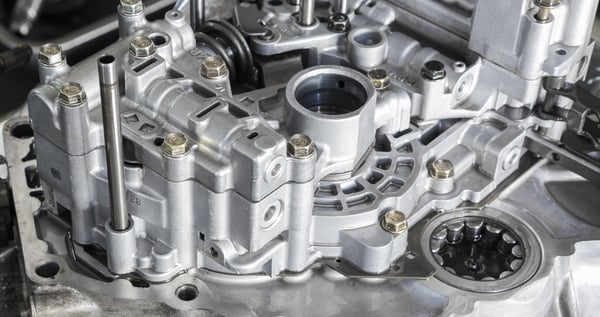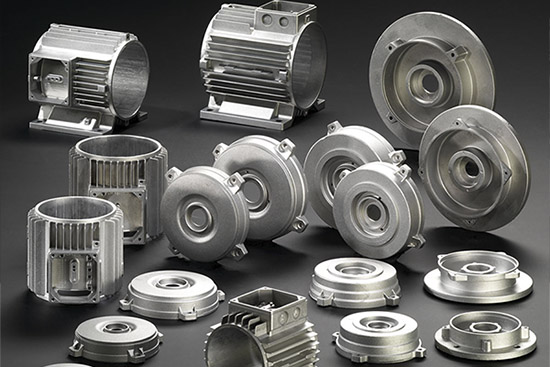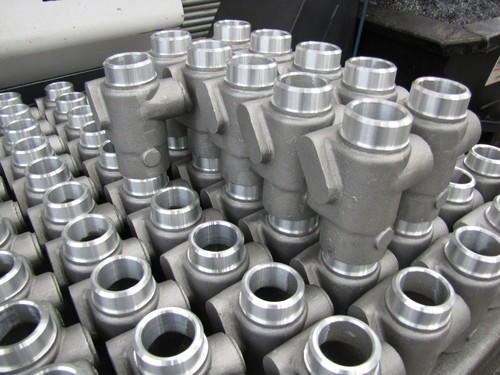Casting is a process that involves making components out of metal by using a mold to create the components.
In order to manufacture the component parts, after the molds have been fabricated, a die casting machine can be used in a manner that is analogous to that of an injection molding machine. This allows the machine to perform the same functions. die casting is a multi-step process that can be broken down into its primary components, which are the preparation stage, the filling stage, the ejection stage, and the shakeout stage. These stages are in order from most important to least important. These stages are listed from most important to least important, beginning with the first stage.
On the other hand, the casting process takes on a slightly different appearance depending on whether or not a hot chamber or a cold chamber is utilized in the process. If a hot chamber is utilized, the appearance of the final product is slightly altered. This distinction arises as a result of the fact that the temperature of the chamber that is utilized during the process is what decides the product that is produced in the end. The process of high-pressure die casting can be carried out in two distinct ways, and each of these ways has its own set of benefits to offer. Both of these ways are beneficial in their own right. Although one of these iterations is superior when it comes to casting at high speeds, the other is able to accommodate a wider range of casting materials. Both of these iterations are displayed here for your perusal. These two distinct incarnations, each with their own set of advantages, are available to purchase.

The process of producing an object by placing it in a heated chamber and using a mold to do so.
The machine that is used to make the dies for the process of metal die casting known as hot chamber die casting contains the necessary components for melting the metal into a liquid state. This ensures that the metal can be cast successfully. This makes it possible to cast the metal with greater precision. Because of this, the machine is able to carry out the process of metal die casting without encountering any issues. Due to the fact that it is a self-contained system, it is only suitable for a select few varieties of casting materials, such as alloys made of zinc, tin, and lead. One example of this type of material is zinc tin lead. For instance, zinc-tin-lead alloys could be cast using this method. Citation neededIt is a lot more effective than the alternative as a result of this, which leads to significantly shorter cycle times as a result of the shorter cycle times.
The process of die casting is carried out in a temperature-controlled environment.
Before beginning the process of cold chamber die casting, the metal must first be heated to the appropriate temperature in a furnace that is separate from the rest of the process. Before starting the process, this step absolutely has to be completed. The production rates are naturally slowed down because of the requirement that the molten metal needs to be transferred to the die casting machine using a ladle. This requirement has been in place for quite some time. In spite of the fact that the metals being cast have a high melting point, it is still possible to cast them by employing a separate furnace rather than a hot chamber die casting machine. This is because casting high-melting-point metals requires a longer melting time. This is because the power of the separate furnace is higher than the power of the hot chamber die casting machine. This is the reason why. The utilization of this technique has made it possible to now carry out casting in aluminum in a manner that is both efficient and effective.
The following procedures are typically performed in the order listed, as this is how the process of metal die casting is carried out. This is the case regardless of whether a device with a warm chamber or a cool chamber is used. It is the same result either way.
The process begins with the preparation of the molds that will be used.
Ejection de remplissage
A shaking up
The process of preparing the mold includes applying lubricant to the interior surfaces of both halves of the die. This is done as part of the preparation process. This ensures that the mold will operate without any problems. After the castings have been completed, it will be much simpler to remove them from the mold in which they were formed. This will allow the castings to be reused. After that, the two halves of the die can be assembled by bringing them together, and once they are in the correct position, locking pins can be used to secure them in their new position.

It is absolutely necessary to make use of a pressure system in order to guarantee that the procedure of filling the mold will proceed without any problems. This particular system is not at all like the hot chamber system or the cold chamber system, neither of which is even remotely comparable to this one. The end result of either procedure is the same, which is molten metal being pushed into the cavity of the mold by a plunger through the sprue. This can be accomplished in either method. The end result is the same regardless of which method was followed. This end result is the culmination of the two processes that were followed. High pressures, reaching up to 35 megapascals in a hot chamber and 140 megapascals in a cold chamber, ensure rapid and comprehensive filling, which, in turn, leads to consistent cooling, which prevents uneven shrinkage and, as a result, part deformation. High pressures can reach up to 35 megapascals in a hot chamber and 140 megapascals in a cold chamber. In a hot chamber, high pressures can reach up to 35 megapascals, while in a cold chamber, they can reach up to 140 megapascals. High pressures can reach up to 35 megapascals in a hot chamber, whereas in a cold chamber, they can reach up to 140 megapascals. The level of pressure is maintained at a steady state throughout the duration of the entire process of cooling.
After opening the mold and separating the two halves of the mold from one another, the process of removing castings from within the mold requires the utilization of ejector pins in order to successfully complete the task. After each of the shots that came before it has been fired, the dies are typically re-closed and made ready for the next one in the sequence to be discharged. This ensures that the dies are in the correct position for the subsequent shot to be fired. During this time, the finished castings are being prepared for shakeout, which involves the removal of scrap sections of the shot, such as sprues, runners, and flash (material that seeps through at the parting line). Shakeout is performed after the castings have been cleaned and inspected. After the castings have been cleaned and inspected, the next step in the process is called shakeout. Utilizing either manual tools, tumbling, or a hydraulic trim die are all viable options for accomplishing the goal of successfully removing this material and achieving the desired result. These are all possibilities worth considering. These three distinct ways of thinking each have merit and should be taken into consideration.
The processing that occurred after die casting metal enables the production of a wide variety of parts, many of which require only a few secondary operations to be finished. This reduces the amount of time and effort that is required to finish the parts.

Die casting metal helps cut down on the amount of waste that is generated throughout the manufacturing process. Due to this, it is possible to achieve a high level of detail in addition to a good surface finish as a result of the high pressures that are used in the process. This is made possible as a result of the fact that the process utilizes high pressures. However, many castings that are either net shape or nearly net shape require additional precision machining for features such as holes, threads, and other details. These features can be added to the casting during the machining process. During the process of machining, these characteristics can be incorporated into the casting. These characteristics can be incorporated into the casting through the process of machining, which is done after the casting has been completed. Casting can be done on a wide variety of metals, some of which are much easier to machine than others. However, there are also many different types of casting metals, each of which has its own unique properties. Die castings, such as those made of magnesium and aluminum, lend themselves exceptionally well to subsequent machining processes. Examples of such processes include milling and turning. Die castings are an example of a process that can be classified as additive manufacturing.
Die castings that have been post-machined offer a number of benefits, including the opportunity to make use of the on-machine inspection capabilities that are provided by the CNC machine. This is just one of the many benefits. This is just one of many advantages that can be gained by using die castings that have been machined after the casting process has been completed. As a direct consequence of this, the machinist is provided with the opportunity to carry out quality assurance checks on the components.

